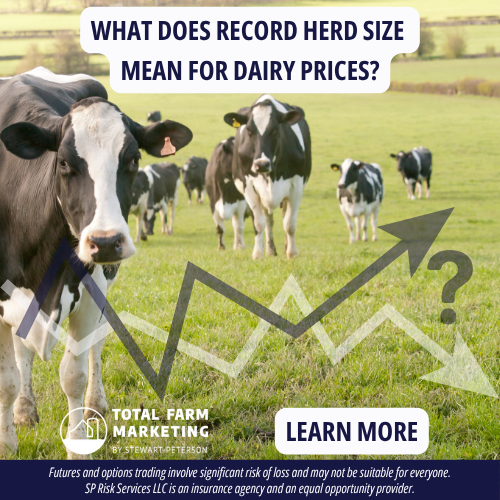To state the obvious, 2020 was a memorable and forgettable year in many ways. For cheese prices, it meant the block/barrel average hit both its lowest level since January 2001 ($1.00375/lb on 4/16/2020) and its highest level ever ($2.705/lb on 7/14/2020). Such a move within three months means something drastic happened. In this case, it was twofold. The first was the onset of COVID-19 and the panic that ensued in March/April of 2020. The second was government involvement to try and keep demand in place, and feed those in need while the world shut down.
The government involvement came in the form of the USDA Farmers to Families Food Box Program. This program delivered 173,699,775 boxes of fresh produce, milk, dairy, and cooked meats to American families in need across the country. The blank check the government used to purchase cheese on the U.S. spot market is what led to the block/barrel average rally, and the subsequent push in Class III Milk futures to their highest level since 2014.
Like what you’re reading?
Sign up for daily TFM Market Updates and stay in the know:
https://info.totalfarmmarketing.com/market-updates
The final program extension ran from January 19 to April 30, 2021 and totaled 40.7 million boxes. This was not enough buying in a short enough period to influence the spot cheese market much in the new year. Since the beginning of 2021, the block/barrel average has traded between $1.4475/lb and $1.82375/lb for a range of $0.37625, much smaller than the $1.70125 range amassed by this time in 2020. The second month Class III Milk futures, similarly, has held a $4.79/cwt range in 2021 vs. $13.83/cwt range last year.

With the rangebound action on cheese prices, eyes will be watching for a close at new highs in the mid $1.80s, or a push to new lows in the low $1.40s. Potential catalysts for a break to new highs could be the labor shortages affecting cheesemakers, more government meddling, or stronger demand heading into the holiday season. Possible new lows could stem from burdensome supply or a slowdown in exports due to a higher dollar. The block/barrel average has traded $1.50/lb or lower 29 times this year without a break below the $1.4475/lb low. Traditionally, sideways ranges (where support has held multiple times at the same level) have not formed great long-term bottoms. Most often, a V-bottom formation is what gives the market the juice to push to notable highs. That means the block/barrel average may need a blowout bottom to shake up the market enough to push to new highs. If 2020 taught us anything, it is that markets can be unpredictable, and preparing for volatility is vital.
Total Farm Marketing and TFM refer to Stewart-Peterson Group Inc., Stewart-Peterson Inc., and SP Risk Services LLC. Stewart-Peterson Group Inc. is registered with the Commodity Futures Trading Commission (CFTC) as an introducing broker and is a member of National Futures Association. Stewart-Peterson Inc. is a publishing company. SP Risk Services LLC is an insurance agency. A customer may have relationships with all three companies. TFM Market Updates is a service of Stewart-Peterson Inc. Futures and options trading involve significant risk of loss and may not be suitable for everyone. Therefore, carefully consider whether such trading is suitable for you in light of your financial condition.


